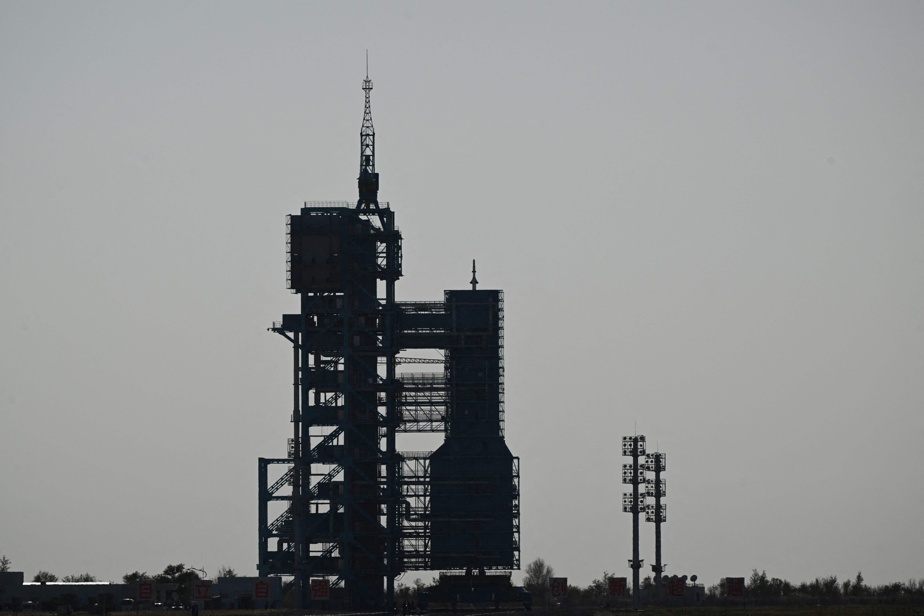(Jiuquan) China sent its youngest crew of astronauts into space on Thursday to its Tiangong space station, with the ambition of strengthening its knowledge of human spaceflight.
The trio of the Shenzhou-17 mission took off aboard a rocket Long March 2F at 11:14 a.m. local time (11:14 p.m. Eastern time) from the Jiuquan launch center in the Gobi Desert (northwest), according to images from state television CCTV.

PHOTO PEDRO PARDO, AGENCE FRANCE-PRESSE
The Chinese crew aboard the rocket.
It includes Commander Tang Hongbo, born in October 1975 and aged around forty, his colleague Tang Shengjie (33 years old) as well as Jiang Xinlin (35 years old).
The average age of the crew is 38 years old, compared to 42 years old during the previous Shenzhou-16 mission.
The spacecraft must dock with the central module of the Tiangong (“Heavenly Palace”) station “around six and a half hours” after takeoff, a spokesperson for the Chinese space program, Lin Xiqiang, said on Wednesday.
Their stay on Tiangong is expected to last six months.
This experience is valuable for the Asian giant, which aims to send a Chinese person to the Moon by 2030, a major objective of a space program which has been progressing steadily for several decades.
Tiangong, whose construction is now complete, has had its final T-shaped appearance for several months. Similar in size to the former Russian-Soviet station Mir, it is however much smaller than the International Space Station (ISS).
Also known as CSS (for “Chinese Space Station” in English), it must remain in Earth orbit for at least 10 years.
China was partly pushed to build its own station by the United States’ refusal to allow it to participate in the ISS. An American law prohibits almost any collaboration between American and Chinese space authorities.
The Asian giant, however, wishes to carry out international cooperation around Tiangong, particularly for carrying out experiments.
